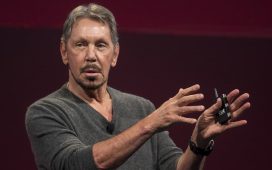SEOUL — As China lifted controls on outbound travel Sunday, Asia braced for the impact of potentially millions of tourists from a country racked by a surge of COVID-19 arriving at their borders.
Some are already expressing serious concerns about the situation in China – and of potential new COVID strains that could be mutating within the vast Petri dish of the world’s largest population.
But Dr. Jerome Kim, director general of the Seoul-based International Vaccine Institute, has few words of praise for the Biden administration, either. Where once a U.S. government stepped up to confront the global HIV crisis, the U.S. this time did not rise to the challenge this time in the face of modern man’s worst-ever pandemic.
While COVID-19 continues to evolve – from the Wuhan variant to Delta to Omicron to the current boogeyman, Kraken, or XBB 1.5 – even deadlier and more devastating strains could appear.
“One of the big fears is – like influenza – COVID mutations,” Dr. Kim, 63, told The Washington Times in a wide-ranging interview. “What happens if we get something like Omicron – but more deadly? That is what keeps me up at night.”
Influenza – which, like COVID, requires booster vaccinations – undergoes mutations “every 10 years” causing “lots of deaths.” But COVID mutates faster than the flu, Dr. Kim said.
SEE ALSO: Asian neighbors wary of COVID but eager for cash as China reopens
“The question is, Will COVID make a shift this year? That’s the nightmare.”
Dr. Kim, a Hawaiian-born Korean-American, is soft-spoken and dapper, looking every inch the Yale and Duke graduate that he is. But he is no desk doctor. A retired colonel in the U.S. Army Medical Corps, he has worked on the front lines of the virus wars in some of the world’s poorest places.
China, where COVID-19 originated, is a middle-, not low-income country, but its current situation is worrisome.
About-face
After Beijing belatedly reversed three years of “zero COVID” lockdowns in December in a hoped-for return to social and economic normalcy, infections exploded nationwide. As China’s home-grown vaccines appear less effective than Western ones, Dr. Kim says the risk of both deaths and mutations lies within China’s largely unvaccinated elderly populace.
“Old people will be chronically ill, as they can’t clear the virus from their systems,” the virus expert said. “That can create mutants.”
SEE ALSO: How China pirated U.S. technology to rapidly expand its nuclear weapon arsenal
Beijing on Sunday lifted its onerous quarantine requirements, re-opening the gates for a massive flood of tourism both internally and abroad. A combination of the eight-day Chinese New Year holiday starting January 21 – 6.3 million Chinese traveled overseas during that vacation in 2019 – and three years of suppressed demand has led to a sharp spike in bookings for travel outside China.
“Chun yun,” China’s 40-day period of lunar new year travel, is often billed as the largest single migration of people in the history of the world. Officials at China’s Ministry of Transport last week estimated that more than 2 billion people will take trips over the next 40 days.
According to reports from China, South Korea, Singapore, and Japan are the top regional destinations; Australia, the U.K. and the U.S. are the top long-haul spots.
Chinese officialdom has ceased to release the numbers of infected and the dead from the coronavirus. Some believe that less transparent policy aims to pre-empt public panic or anger – but it could also be due to healthcare reporting inefficiencies nationwide, Dr. Kim suggested.
Beijing “may have difficulty accessing data in real-time, like they did with SARS-1 in 2003-2004,” he said. “That started in China, but we learned about it from Hong Kong and Vietnam.”
While Western media in China report chaotic hospitals and blazing crematoria, external, macro data is starting to appear. South Korean health authorities, who test visitors from China upon arrival, said on Sunday 23% of those coming from China are infected with COVID-19.
Yet China provides the world’s largest source of tourists – a bonanza for economies around the region. While some nations demand tests from incoming Chinese, others are trusting their vaccination shields to hold firm – including Southeast Asia, which is “well vaccinated,” Dr. Kim said.
The latter strategy is understandable, given that the costs of three years of COVID-19, which are just beginning to be collated, are staggering.
The U.N.’s World Health Organization report in November estimated that there had been some 14.83 million global deaths from COVID through November 2022. That figure is 2.74 times higher than the numbers reported in popular online databases. The discrepancy stems from the lack of diagnostic tools and death registers in developing countries, Dr. Kim explained.
Monetarily, the pandemic’s cost could hit $140 trillion, Mr. Kim said – equivalent to 2019’s total global GDP. “The ripples will be felt for years,” he added.
In fact, Dr. Kim is not convinced the pandemic is over – and not just due to the China situation, but given 2022’s 300,000 U.S. COVID deaths.
“We declared victory and went home,” he said.
America suffers from low uptake of boosters and vaccine hesitancy. U.S. vaccine skeptics, Dr. Kim said, have “contaminated two decades of progress” on vaccination, despite what he called an impressive safety record for the leading vaccine strains so far.
“There used to be a global consensus but now, vaccine hesitancy is a real issue,” he said. “In Sub-Saharan Africa, everyone has a cellphone, and they are reading the chatter.”
For those over 60 and unvaccinated, COVID has a 5% mortality rate, Dr. Kim said. After vaccination, that falls to under 2% and after boosting, to 0.1%.
Moreover, mRNA vaccines offer “some protection against future variants,” he advised. “Vaccine safety should be less of a concern than durability for cross-protection.”
Falling short
The U.S. avoided many of the problems facing China as its struggles to open up, but Dr. Kim said U.S. healthcare messaging has been generally ineffective at key moments.
“Vaccinations should be seen alongside things that are good for us – eat well, exercise, don’t smoke,” Dr. Kim said. “But we are not that good at doing things that are good for us.”
He praised the “warp speed” development of U.S. vaccines, Dr. Kim said both the Trump and Biden administrations of failing to seize the moment and offer comprehensive solutions for the developing world as well.
“In low-income countries, full-population vaccinations would cost 30% of their total health budgets for a year, and countries don’t have the capacity,” Dr. Kim said. “A nightmare is to have the vaccine in hand, and not be able to administer it.”
Therein lies the problem.
“What was needed, was a leader who was able to get vaccines to an airport in, say, Senegal, and then into the arms of Senegalese,” Dr. Kim insisted. “Who thought through the whole process?
It’s a steep challenge. But it is one America has mastered before.
The George W. Bush administration’s President’s Emergency Plan for AIDS Relief (PEPFAR) is the benchmark program, one that provides billions of U.S. aid dollars per year to supply effective, low-cost solutions for HIV, largely in Africa.
The legacy endures. “Barack Obama is from Kenya, and everyone in Kenya knows Obama,” Dr. Kim said. “But who do they respect? George Bush.”
Compare then to now.
“That was real leadership, the leadership expected from America, that made a difference to global health,” Dr. Kim said. “Who was the leader in COVID?”
For more information, visit The Washington Times COVID-19 resource page.






